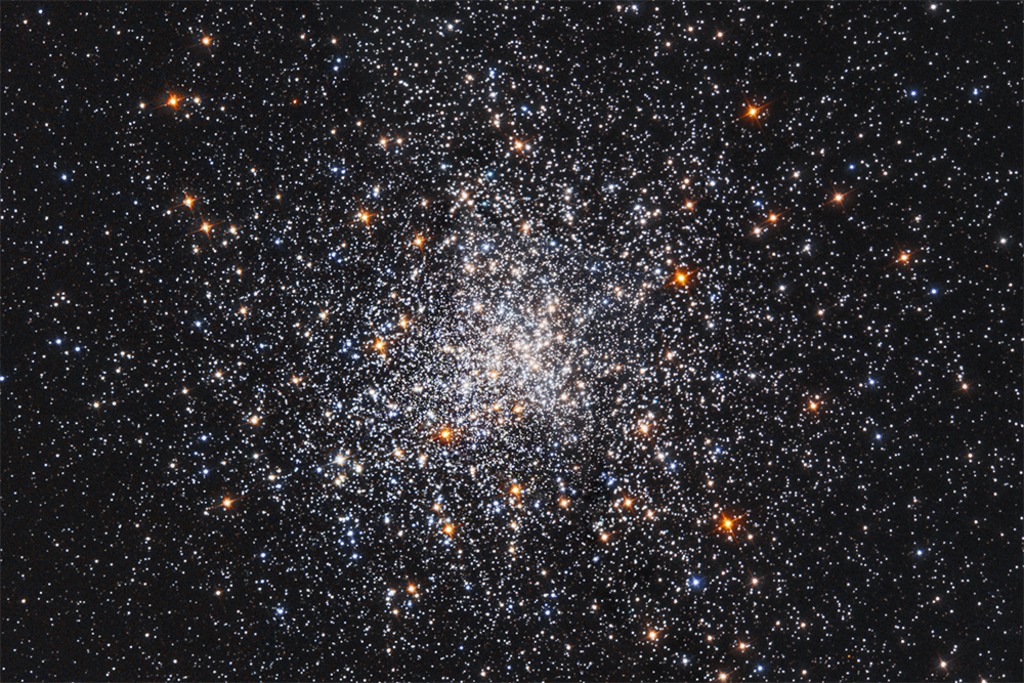Starburst Galaxy Messier 82 from Hubble

Plumes of glowing hydrogen blast from the central nucleus of the starburst galaxy Messier 82.
The NASA Hubble Space Telescope captured this richly detailed view of the magnificent starburst galaxy, Messier 82 (M82). The galaxy is remarkable for its bright blue disk, webs of shredded clouds, and fiery-looking plumes of glowing hydrogen blasting out of its central regions.
Throughout the galaxy's center, young stars are being born 10 times faster than they are inside our entire Milky Way Galaxy. Astronomers call this a "starburst" galaxy. The result is a huge concentration of young stars that generate a fierce galactic superwind.
Many of these young stars are crammed into tiny but massive star clusters. These, in turn, congregate by the dozens to make the bright patches, or "starburst clumps," in the central parts of M82. The clusters in the clumps can only be distinguished in the sharp Hubble images. Most of the pale, white objects sprinkled around the body of M82 that look like fuzzy stars are actually individual star clusters about 20 light-years across and can contain up to a million stars.
The rapid rate of star formation in this galaxy eventually will be self-limiting. When star formation becomes too vigorous, it will consume or destroy the material needed to make more stars. The starburst then will subside, probably in a few tens of millions of years.
Located 12 million light-years away, M82 appears in the direction of the constellation Ursa Major, the Great Bear. It is also called the "Cigar Galaxy" because of the elliptical shape produced by the oblique tilt of its starry disk relative to our line of sight.
Astronomers assembled this six-image composite mosaic by combining exposures taken with four colored filters that capture starlight from visible and infrared wavelengths as well as the light from the glowing hydrogen filaments.
For More Information
Credits
Please give credit for this item to:
NASA, ESA, and The Hubble Heritage Team (STScI/AURA)
-
Project support
- Mark Malanoski (Global Science and Technology, Inc.)
- Marit Jentoft-Nilsen
- Frank Summers (STScI)
Release date
This page was originally published on Monday, February 27, 2017.
This page was last updated on Tuesday, November 14, 2023 at 12:34 AM EST.
